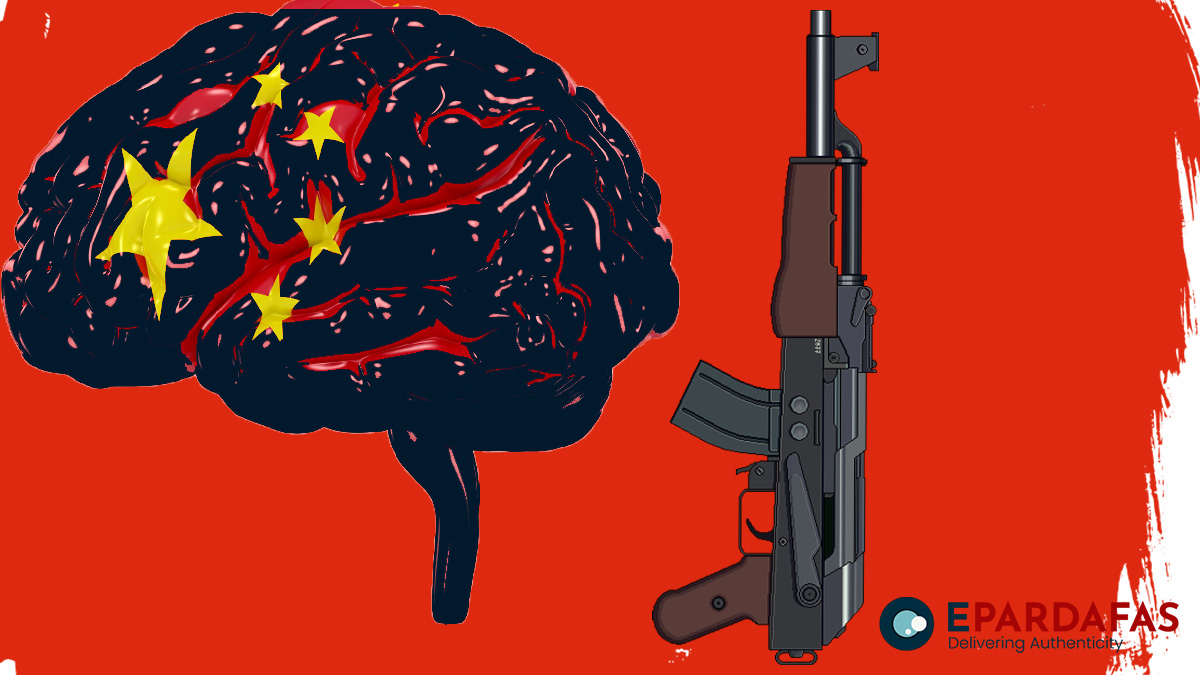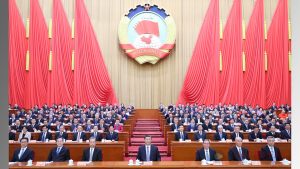
Cognitive Warfare Unleashed: China’s NeuroStrike Program Manipulates Minds of Opponents
A concerning aspect of the Chinese weapon program, specifically the weaponization of public opinion in targeted nations, has been confirmed through a comprehensive twelve-page report by US researchers. The report, titled “Enumerating, Targeting and Collapsing the Chinese Communist Party’s NeuroStrike Program,” reveals that China has developed a novel class of neuro-strike weapons capable of not only impairing the cognitive abilities of their targets but also manipulating their brains. These weapons have the potential to induce neurological issues, reduce awareness, and interfere with the cognitive functions of soldiers engaged in combat. NeuroStrike, as defined by McCreight, a renowned expert in cognitive warfare, refers to the deliberate targeting of soldiers’ and civilians’ brains using unique non-kinetic technology to impair cognition, diminish situational awareness, cause long-term neurological degradation, and disrupt normal cognitive functions.
Importantly, the report emphasizes that NeuroStrike and psychological warfare constitute a fundamental component of China’s asymmetric warfare strategy against the United States and its Allies in the Indo-Pacific region. These tactics are not merely unconventional capabilities reserved for extreme circumstances but are a standard part of the Chinese Communist Party’s (CCP) order of battle. This strategic mindset reflects China’s approach.
The report highlights that China’s weaponization of neuroscience extends beyond the traditional understanding of microwave weapons. It now encompasses the utilization of extensively distributed human-computer interfaces to exert control over entire populations, in addition to a range of weapons designed to induce cognitive damage. These weapons can eliminate sources of resistance against China by instilling intense fear or other forms of cognitive dissonance, thereby inducing inaction.
The Academy of Military Medical Sciences houses a division known as the PLA Centre for Disease Control and Prevention, where these weapons are manufactured. This institute was added to the United States export control blacklist in December 2021, with its prominent role in CCP NeuroStrike research serving as a key justification.
China has long been dedicated to evolving a strategy of winning wars without direct confrontation, in line with the teachings of Sun Tzu. In the late 1990s, China introduced its “No Contact Warfare” strategy, which aimed to create confusion within an adversary’s command and control system. In 2014, China developed its “Three Warfares Strategy,” encompassing psychological warfare, media warfare, and legal warfare, to achieve its objectives. Broadly speaking, these objectives involve seizing the “decisive opportunity” to control public opinion, organizing psychological offense and defense, engaging in legal battles, and manipulating popular will and public opinion.
The report outlines how this strategy was applied in the South China Sea (SCS), following a seven-step process. Firstly, China altered the ground conditions and attempted to shape the internal and external environment to support its territorial claims. Secondly, it employed international arbitration to delay any settlement while continuing to modify the ground conditions. Thirdly, it dismissed the validity of international arbitration rulings in the event of an unfavorable outcome and shifted focus to domestic laws. Fourthly, it claimed ownership of the entire nine-dash-line area, which it asserted had been forcefully taken by foreign aggressors, based on fabricated historical evidence. Fifthly, China launched a high-intensity propaganda campaign to reinforce its claims, projecting that it was exercising its legitimate rights to recover from the perceived “Century of Humiliation.” Sixthly, it utilized Chinese media, social media platforms, and public diplomacy to achieve its objectives. Lastly, China employed the Chinese Maritime Militia, Coast Guard, and PLAN to intrude into the Exclusive Economic Zones (EEZs) of other countries and impede their oil exploration activities. These operations served to divert international attention from China’s activities in the SCS and along the Indo-Tibetan border during the pandemic.
China’s operations primarily focus on Hong Kong, Taiwan, and India, as well as countries that dispute its claims in the nine-dash-line. The report observes that the SSF (Strategic Support Force) now functions as a superstructure for various Chinese military assets across different theaters in the Indo-Pacific, while also serving as the primary deployment platform for new NeuroStrike weapons.
In recent years, the United States, France, and India have conducted studies on Chinese influence operations globally, indicating that they have taken on the characteristics of cognitive warfare. This type of warfare integrates all available elements from the information, cyber, and psychological domains, elevating them to a new level by not only manipulating the perception of the target population but also ensuring that the desired actions are achieved. It involves psychological operations, neuroscience manipulation of target’s cognitive capabilities, and the implementation of social engineering. In this form of warfare, the human mind becomes the battleground.
According to the July 2022 report by the US National Counterintelligence and Security Centre, the People’s Republic of China (PRC) engages in extensive activities to manipulate state and local leaders in the United States, aiming to garner support for policies favorable to the PRC and CCP. Exploiting the relative independence enjoyed by local leaders from Washington, the PRC seeks to turn them into proxies advocating Beijing’s desired policies.
In October 2021, the Institute for Strategic Research of the French Ministry for the Armed Forces presented a study titled “The Chinese Influence Operations – A Machiavelli Moment,” which indicates that the CCP’s influence operations have become considerably more aggressive in recent years, reflecting a “Machiavellian turn.” The Party-State now appears to believe that it is safer to be feared than loved, echoing Machiavelli’s words in “The Prince.” The study notes that the PRC is particularly targeting diaspora communities, academics, think tanks, politicians, and the media.
In India, the Law and Society Alliance published a report in September 2021, outlining how Chinese influence operations manipulate perceptions in various sectors. It concludes that China’s subtle attempts to infiltrate Indian society through various means, such as financial investments, fellowships, travel courtesies, and coercion, can have extremely damaging long-term effects. The report points out that the CCP extensively uses Confucius Centers and China Study Centers, sending selected individuals to China for “re-education” and later employing them as useful agents of the CCP to push its agenda in India. China deploys CCP-appointed intellectuals and academicians to brainwash individuals, produces journals and magazines to promote Chinese views, and generously compensates contributors.
The CCP’s United Front Work Department (UFWD) plays a leading role in directing and coordinating global influence operations through various front organizations. Other PRC government agencies involved in foreign influence operations include China’s Ministry of Foreign Affairs, Ministry of State Security, and Ministry of Education. The Chinese People’s Association for Friendship with Foreign Countries (CPAFFC), self-described as a “national people’s organization engaged in people-to-people diplomacy of the People’s Republic of China,” is among the important entities used for foreign influence operations. The SSF-linked Unit 61090 and its associated front organizations are involved in manipulating the perceptions of targets.
Chinese operations encompass disinformation, counterfeiting, sabotage, discrediting operations, destabilization of foreign governments, provocations, false-flag operations, manipulation aimed at undermining social cohesion, the recruitment of agents known as “useful idiots,” and the establishment of front organizations.
Considering China’s escalating cognitive warfare capabilities, it is crucial to take decisive actions to counter this growing threat. The recent report recommends specific steps to generate a range of executable options aimed at directly targeting and dismantling the CCP NeuroStrike program. These steps include raising public awareness about the dangers of NeuroStrike weapons, facilitating international discussions to encourage research in neuroscience and cognitive science studies, and neutralizing China’s NeuroStrike capabilities. Addressing this burgeoning menace necessitates collaborative efforts, and immediate action should be taken to counteract its impact.
















Comments